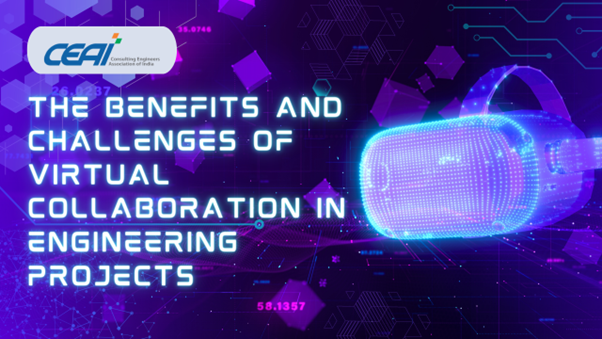
In today’s interconnected world, virtual collaboration has become an integral part of engineering projects. With advancements in technology and the increasing globalization of the workforce, virtual collaboration offers numerous benefits for engineering teams. However, it also comes with its own set of challenges. In this blog post, we’ll explore the benefits and challenges of virtual collaboration in engineering projects, and how teams can navigate them to achieve successful outcomes.
Benefits of Virtual Collaboration in Engineering Projects
Global Reach
Virtual collaboration eliminates geographical boundaries, allowing engineering teams to work together regardless of their physical location. This opens up opportunities for global talent acquisition, enabling teams to access specialized expertise from around the world.

Enhanced Efficiency
Virtual collaboration tools enable real-time communication, file sharing, and project tracking, streamlining workflows and improving efficiency. Team members can collaborate on design documents, share progress updates, and resolve issues quickly, reducing project timelines and costs.
Flexibility and Remote Work
Virtual collaboration empowers teams to work flexibly and remotely, promoting work-life balance and accommodating diverse work preferences. It eliminates the need for constant travel, reduces commuting time, and facilitates seamless communication across time zones.

Increased Innovation
Collaborating virtually brings together diverse perspectives and experiences, fostering creativity and innovation. Different team members can contribute unique ideas and solutions, resulting in more robust engineering designs and problem-solving approaches.
Challenges of Virtual Collaboration in Engineering Projects
Communication and Misinterpretation
Virtual collaboration relies heavily on digital communication channels, which may lack the nuances of face-to-face interaction. Misinterpretation of messages or lack of clarity can lead to misunderstandings and project delays. It’s important to establish clear communication protocols and encourage regular video or voice calls to minimize miscommunication.

Collaboration Tools and Technology
While virtual collaboration tools offer numerous benefits, they also come with a learning curve. Teams need to invest time in training and familiarizing themselves with the tools to maximize their effectiveness. Technical issues, such as connectivity problems or software compatibility, may also pose challenges that need to be addressed promptly.
Building Trust and Relationships
Building trust and camaraderie among team members can be more challenging in a virtual setting. Without face-to-face interactions, it may take longer for team members to establish strong working relationships. Regular virtual team-building activities, informal discussions, and fostering an inclusive team culture can help bridge this gap.

Time Zone and Cultural Differences
When working with globally distributed teams, varying time zones and cultural differences can present challenges for scheduling meetings and coordinating work. It requires effective planning and communication strategies to ensure everyone’s participation and understanding.
Navigating the Challenges and Maximizing the Benefits
To overcome the challenges and maximize the benefits of virtual collaboration in engineering projects, teams can adopt the following strategies:
- Establish clear communication channels and protocols to ensure effective and transparent information sharing.
- Invest in reliable collaboration tools and provide training to team members to enhance their proficiency.
- Foster a culture of open communication, trust, and collaboration by encouraging regular virtual meetings and team-building activities.

- Embrace cultural diversity and promote inclusivity by acknowledging and respecting different perspectives and work styles.
- Set clear goals, milestones, and expectations to keep the project on track and ensure accountability.
- Regularly evaluate and reassess the virtual collaboration process to identify areas for improvement and implement necessary adjustments.
Conclusion
Virtual collaboration offers immense potential for engineering projects, enabling global reach, enhanced efficiency, flexibility, and increased innovation. However, it also presents challenges related to communication, collaboration tools, trust-building, and managing time zone differences. By adopting effective strategies and addressing these challenges proactively, engineering teams can harness the benefits of virtual collaboration and achieve successful project outcomes in the digital era.
